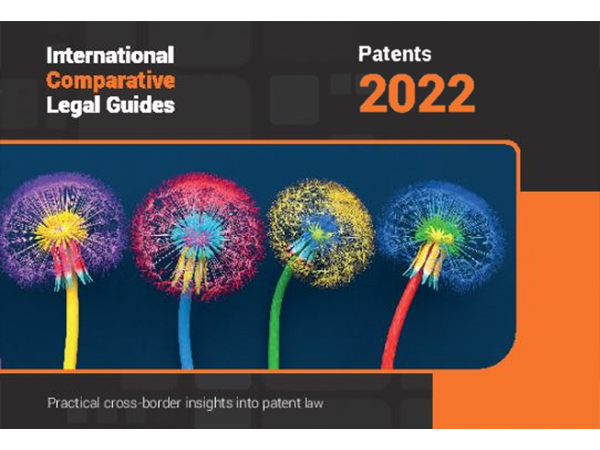
Intellectual Property
Viewpoints
Filter by:
Regulation, Enforcement, and Associated Challenges of the ENDS Industry: Part II
April 15, 2025 | Blog | By Michael Van Loy, Joanne Hawana, Sophia Petrichenko
Arbitration of SEP Disputes—A Growing Trend?
April 11, 2025 | Blog | By Matthew Hurley, Matthew Galica, Amanda Metell
Ericsson and Lenovo announced last week that they had entered into a global cross-licensing agreement involving 4G and 5G wireless technology patents.
Regulation, Enforcement, and Associated Challenges of the ENDS Industry: Part I
April 4, 2025 | Blog | By Michael Van Loy, Joanne Hawana, Sophia Petrichenko
The UPC and EPO Divide: Understanding Conflicting Revocation Proceeding Outcomes
April 1, 2025 | Blog | By Michael Van Loy, Sophia Petrichenko
Understanding How to Patent Agentic AI Systems
March 20, 2025 | Blog | By Frank Gerratana, Neil Supnekar
Three Mintz Members have been selected to serve on Law360’s 2025 Editorial Advisory Boards in their respective practice areas. The editorial advisory boards provide feedback on Law360’s coverage and expert insight on how best to shape future coverage.
Ahoy! ITC Welcomes SEP Holders Navigating for The Best Venue
March 19, 2025 | Article | By Reza Dokhanchy, Michael Renaud, Amy LoBue
While many have the impression that SEPs cannot be successfully asserted at the ITC, where injunction is the only remedy, a closer look at ITC case law reveals that is incorrect. Given the right circumstances, the ITC is arguably the best venue to litigate SEPs.
Trade Secret Owners Need to Find the Facts Instead of Letting the Facts Find Them
March 14, 2025 | Blog | By Reza Dokhanchy, Laura Petrasky, Michael Renaud
Federal Circuit Affirms PTAB’s Analysis Finding Product-by-Process Claim Narrowed During Prosecution Valid Over Prior Art
March 14, 2025 | Blog | By Joe Rutkowski, Peter Cuomo
Whose Profits Are These, Anyway? Who Constitutes The Defendant For Purposes of Disgorgement Of Profits In A Trademark Infringement Case
March 6, 2025 | Blog | By Laura Franco
Has There Been A Sea Change in Eligible Domestic Industries at the ITC That Will Last?
March 6, 2025 | Blog | By Michael Renaud, Adam Rizk, Matthew Karambelas, Amy LoBue, Paul Weinand
Patenting AI/ML Life Sciences and TechBio Innovations – How Much Disclosure is Sufficient?
February 24, 2025 | Blog | By Hanna Kim, PhD, Terri Shieh-Newton
UPC Risks Unveiled: Navigating Outcome Trends and Parallel Revocation Strategies
February 12, 2025 | Blog | By Michael Van Loy, Carolina Säve
US Copyright Office Publishes Second Part of Report on AI Copyrightability — AI: The Washington Report
February 7, 2025 | Article | By Bruce Sokler, Michael Renaud, Scott Lashway, Matthew Tikhonovsky
Read about the second part of the United States Copyright Office’s report on Copyright and Artificial Intelligence, which focuses on the question of how AI affects copyrightability.
Avoiding the Provisional Application Filing Pitfall of Narrowed Claim Interpretation
January 29, 2025 | Article | By Christina Sperry, Neil Supnekar
USPTO Issues Artificial Intelligence Strategy
January 24, 2025 | Article | By Terri Shieh-Newton, Frank Gerratana, Amritaa Ganguly
Year in Review: The Most Popular IP Posts of 2024
January 6, 2025 | Blog | By Christina Sperry
Overcoming Patent Challenges for AI/ML-Assisted Life Sciences (TechBio) Inventions: Strategies for Navigating Section 101 at the US Patent & Trademark Office
December 4, 2024 | Blog | By Frank Gerratana, Qi Zhang, Terri Shieh-Newton
What To Do Now That The AFCP (After Final Consideration Program) Is Ending?
December 2, 2024 | Blog | By Christina Sperry
A Later-Filed, Later-Expiring Unrelated Patent is Not a Proper Reference Patent for an Obviousness-Type Double Patenting Rejection
November 20, 2024 | Blog | By Alex Trimble, PhD
Explore Other Viewpoints:
- Data Centers & Digital Infrastructure
- AI: The Washington Report
- Antitrust
- Appellate
- Arbitration, Mediation & Alternate Dispute Resolution
- Artificial Intelligence
- Awards
- Bankruptcy & Restructuring
- California Land Use
- Cannabis
- Class Action
- Complex Commercial Litigation
- Construction
- Consumer Product Safety
- Corporate Governance (ESG)
- Cross-Border Asset Recovery
- DEI Legal Developments
- Debt Financing
- Direct Investing (M&A)
- Diversity
- EB-5 Financing
- Education & Nonprofits
- Employment
- EnforceMintz
- Environmental (ESG)
- Environmental Enforcement Defense
- Environmental Law
- Environmental, Social, and Corporate Governance (ESG)
- FDA Regulatory
- False Claims Act
- Federal Circuit Appeals
- Financial Institution Litigation
- Government Law
- Growth Equity
- Health Care
- Health Care Compliance, Fraud and Abuse, & Regulatory Counseling
- Health Care Enforcement & Investigations
- Health Care Transactions
- Health Information Privacy & Security
- IP Due Diligence
- IPRs & Other Post Grant Proceedings
- Immigration
- Impacts of a New US Administration
- Insolvency & Creditor Rights Litigation
- Institutional Investor Class Action Recovery
- Insurance & Financial Services
- Insurance Consulting & Risk Management
- Insurance and Reinsurance Problem-Solving & Dispute Resolution
- Intellectual Property
- Investment Funds
- Israel
- Licensing & Technology Transactions
- Life Sciences
- Litigation & Investigations
- M&A Litigation
- ML Strategies
- Medicare, Medicaid and Commercial Coverage & Reimbursement
- Mergers & Acquisitions
- Patent Litigation
- Patent Prosecution & Strategic Counseling
- Pharmacy Benefits and PBM Contracting
- Portfolio Companies
- Privacy & Cybersecurity
- Private Client
- Private Equity
- Pro Bono
- Probate & Fiduciary Litigation
- Products Liability & Complex Tort
- Projects & Infrastructure
- Public Finance
- Real Estate Litigation
- Real Estate Transactions
- Real Estate, Construction & Infrastructure
- Retail & Consumer Products
- Securities & Capital Markets
- Securities Litigation
- Social (ESG)
- Special Purpose Acquisition Company (SPACs)
- Sports & Entertainment
- State Attorneys General
- Strategic IP Monetization & Licensing
- Sustainable Energy & Infrastructure
- Tax
- Technology
- Technology, Communications & Media
- Technology, Communications & Media Litigation
- Trade Secrets
- Trademark & Copyright
- Trademark Litigation
- Unified Patent Court (UPC)
- Value-Based Care
- Venture Capital & Emerging Companies
- White Collar Defense & Government Investigations
- Women's Health and Technology






